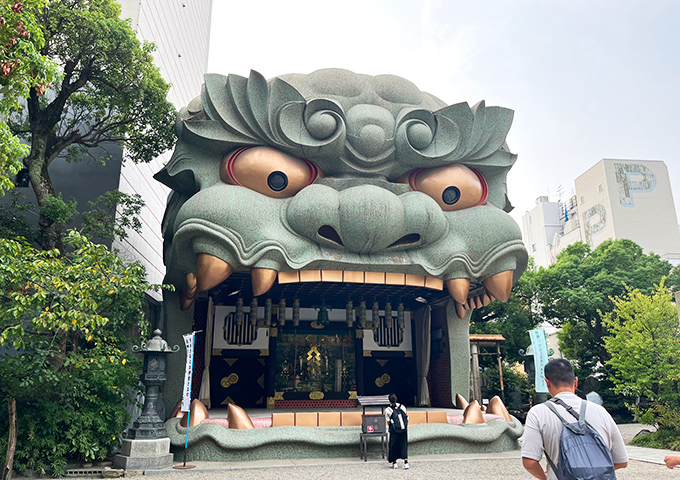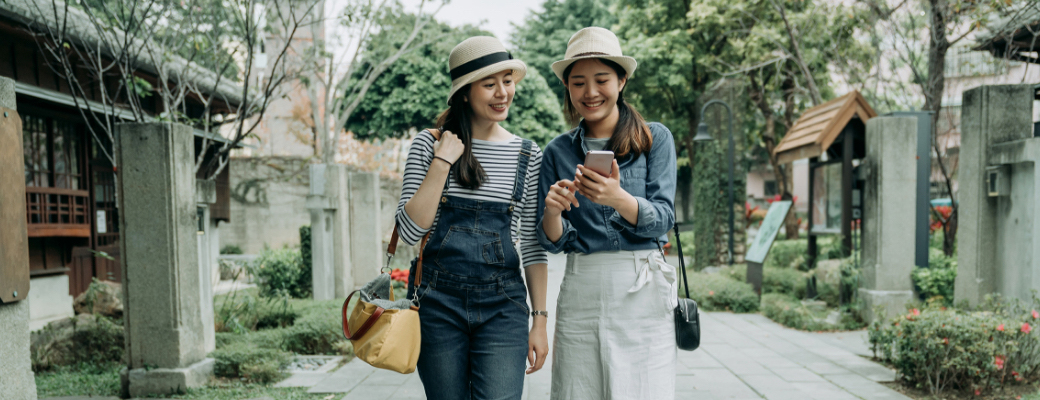
Shrines and Temples
Namba Yasaka Shrine

Easy-to-understand instructions on how to visit the shrine
Do you know the proper way to visit a shrine? This is an easy-to-understand introduction to general manners for visiting shrines that you should know, such as how to pass through the torii gate, how to walk along the approach to the shrine, and how to perform the rituals of hand-watering and offering money. Please use this as a reference when touring shrines.
There is actually no correct way to visit a shrine. There are no strict rules for etiquette. Also, the manners of worship may differ depending on the shrine or region. The most important thing is to visit shrines with all your heart and soul.
However, basic manners and etiquette do exist. Here are some general manners and etiquette for visiting shrines.
"Torii" is the symbol of a Shinto shrine. It is said that the torii gate serves as a kind of boundary that separates the realm of the gods from the world in which we live.
Since you are intruding on the domain of the gods, you should bow first when you pass through the torii. When you leave after visiting the shrine, do not forget to turn toward the shrine pavilion and bow after passing through the torii.
After passing through the torii gate, walk along the approach to the shrine. Note that the center of the approach is called "seichu," or the path of the gods. When walking along the approach, avoid the center and go along the edge of the approach as much as possible.
If you have no choice but to cross the center of the approach, you can show respect by bailing as you cross or by stopping in the center and bowing to the deity.
Walk along the approach to the shrine and stop by the "Tezumi-ya" (Shrine of the Goddess of Mercy) on your way to the shrine pavilion. The Tezumisha is a place to purify oneself with washing water called Tezui. To cleanse oneself at the Chozuisha is called "Te-mizu-toroku (to cleanse oneself with water).
1. Pick up the ladle provided in the hand-watering basin with your right hand.
2. Pour water drawn from the basin over your left hand and wash it. At this time, be careful not to let the water return to the basin after washing your hands.
3. Switch the ladle to the left hand, draw up water from the water basin, and wash the right hand, being careful not to let the water return to the water basin as in 2.
4. Switch the ladle to your right hand again and draw up water and place it in the palm of your left hand.
5. Rinse the mouth with the water collected in the left palm. Do not rinse your mouth directly with the ladle.
6. Gently rinse the mouth, and finally let the water flow into the left hand.
7. Stand the ladle up and let the remaining water run down the handle (handle) to wash the handle.
8. Return the ladle to its original place, face down.
After purifying yourself at the water fountain, stand in front of the offering box when you arrive at the shrine. Bail and place your offering in the offering box to express your gratitude to God. There is no set amount, so it is best to pay what you feel is an appropriate amount as a sign of gratitude.
If there is a bell on top of the money box, ring the bell to set the mood for your visit to the shrine before placing your offering in the box. It is said that the sound of the bell is meant to purify worshippers.
Once you have placed your money in the money box, it is time to visit the shrine. The basic rule is to bow two times, clap two times, and bow once.
1. Straighten your posture and repeat the deep bow twice.
2. Place both hands together at chest level. At this point, the right hand should be slightly pulled forward. Place both hands shoulder-width apart and clap loudly twice.
3. Gently clasp your hands together and pray with all your heart.
4. Lower your hands and bow deeply once more to finish.
Here are the main shrines along the Nankai line.
Sumiyoshi-Taisha
Sumiyoshi-jinja is the head shrine of the 2,300 or so Sumiyoshi shrines in Japan. Known locally as "Sumiyosan" in Osaka, the shrine has long been beloved by the locals. It is also famous throughout Japan for the more than 2.3 million people who visit the shrine at the beginning of each year.
Hochigai Shrine
Located on the border of the three provinces of Settsu, Kawachi, and Izumi, the shrine is said to be "a pure land without direction. The shrine is revered as a deity that protects people from disasters caused by each direction.
Imamiya Ebisu Shrine
Ebisu, the god of prosperity, is enshrined at this shrine. Tooka Ebisu, held over three days from January 9 to 11 every year, is a very popular festival, attracting about one million visitors each year.
Mozu Hachimangu shrine
This is a shrine with a long history, said to have been founded in the Yamato period, around the time of Emperor Kinmei. The shrine pavilion is one of the largest in the prefecture. Here, visitors can draw a "haniwa mikuji" (fortune) in a cute container resembling a haniwa (clay figurine) for a starting fee of 1,000 yen. The "Tsukimisai (moon-viewing) Festival" held every year on the 15th day of the 8th lunar month is also famous, and the powerful "futon-daiko" dedication ceremony is well worth seeing.
Kongozan Katsuragi Shrine
The shrine is located near the summit of Mount Kongo, which traverses the border between Osaka and Nara prefectures. Currently, it enshrines 38 shrines of Kuzugi, the guardian deity of Mt. Mt. Kongo has long been considered a sacred mountain of "Shintoism-Buddhism mixture" that combines and harmonizes the two faiths of Shintoism and Buddhism.
If you practice the general manners and etiquette of shrine visits, you will find it easier to express your gratitude to the gods.
There are many historic shrines along the Nankai line, making it a perfect place to visit shrines. When visiting shrines, please refer to the methods introduced in this article.

